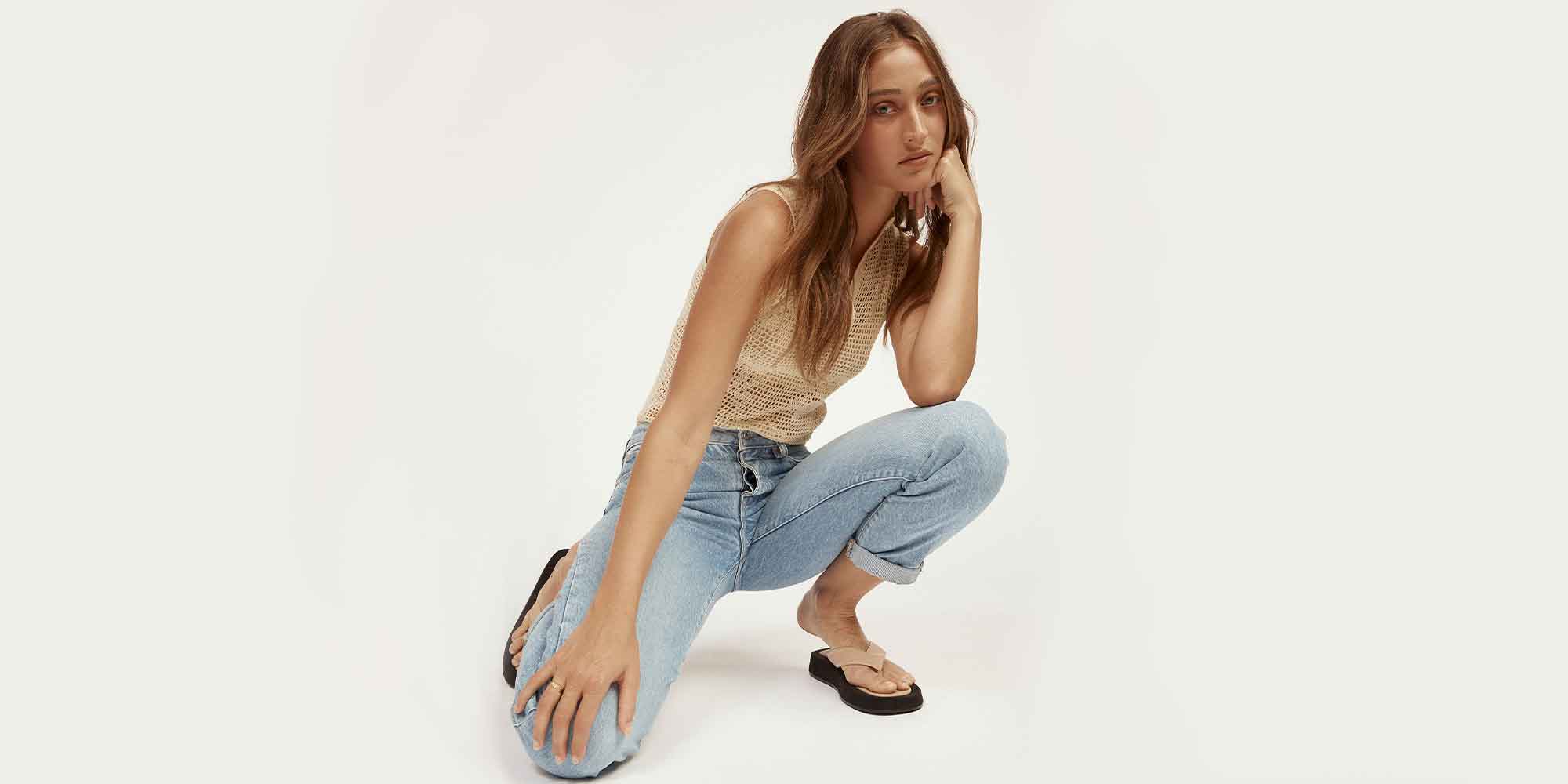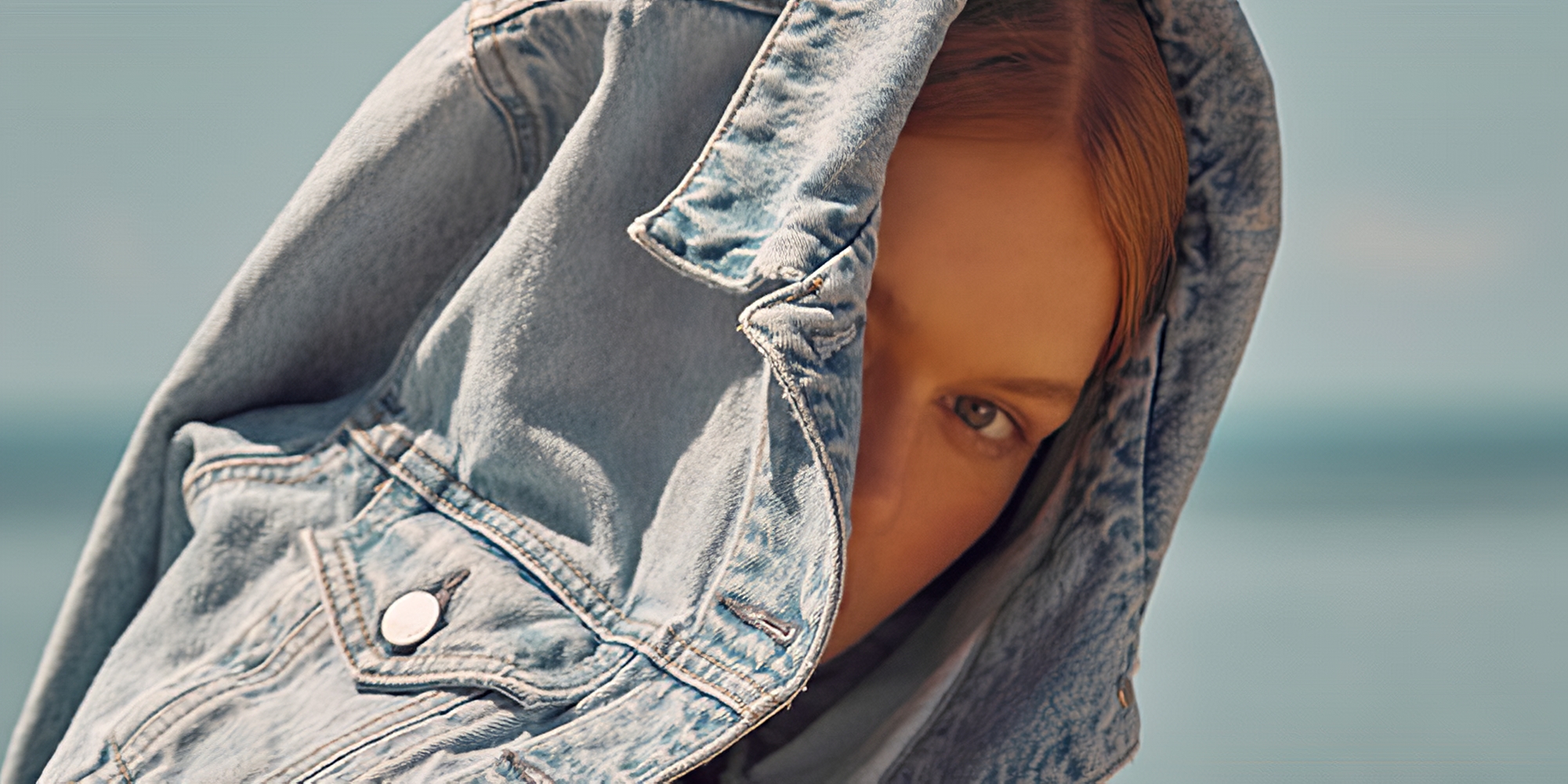Settle in and discover the best and worst rated fashion brands of 2023, ranked “Great” and “We Avoid” by our world-leading methodology. The gist this year? Greenwashing is still rampant, and the biggest brands aren’t doing enough, but it’s not all gloomy. More brands than ever—mostly smaller, independent labels—are clocking onto the importance of transparency and meaningful action in sustainability efforts for the good of our collective future.
2023 in fashion news: wrapped
2023 has been a turbulent year in fashion and beyond, with stark economic uncertainty, the rapid growth of AI tech, and the ongoing wars in Gaza and Ukraine. This November also saw garment workers in Bangladesh fighting for fair wages and facing police brutality, fines, and layoffs if they continue to protest. The undercurrent of it all, of course, is the climate crisis, which is driven in part by fashion’s energy-intense and fossil-fuel guzzling supply chains.
One thing’s loud and clear in 2023: fashion needs dramatic systems change from the bottom up. But once again, it’s the most profitable and powerful brands that seem to be doing the least.
Unfortunately, as highlighted in our COP28 report, little has changed for the better in the industry since last year. In reviewing over 5,900 brands with our world-leading methodology, we found that most of the biggest brands aren’t taking urgent action to address their environmental impacts. In fact, it seems the biggest brands with the most opportunities to transform the industry for the better are just as lacking in transparency as ever. While more are setting climate change targets, the vast majority—a shocking 81%—of large brands with greenhouse gas emissions targets do not state whether they are on track to meet them. Despite the promises, we still don’t know whether brands are actually keeping them. And we, as consumers and as citizens, have a right to know that information to be able to support brands making an effort.
That’s only one of many examples where, when we survey the lists of top and bottom rated brands, we see a familiar trend: the brands that need to be taking action on the climate, on living wages, on supply chain transparency, and so on simply are not.
So, what has that looked like on the ground level? As ever, notorious ultra fast fashion brands have been raking in the cash while making headlines for all the wrong and predictable reasons. Meanwhile, a still relatively small but fast growing movement of consumers are starting to reject fast fashion’s business-as-usual—a model that can’t exist in a sustainable future, full stop.
Fashion’s climate inaction is in its cynical era
“The era of global boiling has arrived,” said António Guterres, the UN secretary general, during 2023’s summer of widespread wildfires and extreme heat. “Climate change is here. It is terrifying. And it is just the beginning.” Despite such stark warnings, everywhere you look, from political slogans to fashion campaigns, we often hear greenwashing more than we see meaningful action, as journalist Sophie Benson reported in our annual deep dive into brands’ climate inaction.
Crucially, for the first time since the 2015 Paris Agreement, there will be an assessment of the progress made towards mitigating global warming. Early reporting from the UN suggests the global community is still “not on track” to meet the goals set in 2015 despite a “rapidly narrowing window” of opportunity.
On an individual brand level, things aren’t looking much better. Ultra fast fashion brand SHEIN came under fire (yet again) when it sent a group of influencers on an “educational” SHEIN 101 trip to its new “innovation centre” and one of its factories in June this year. The trip rubbed many the wrong way, including our head of ratings, who observed, “there are many allegations of SHEIN’s labour practices suggesting the brand is likely to be contracting with manufacturers that may be grossly exploiting, overworking, and underpaying their garment workers.” SHEIN is still one of the most opaque brands in the industry, and this SHEIN 101 trip was just another attempt to further hide what’s really going on behind the scenes. SHEIN is also prepping for a US IPO in a major test for investor appetite in 2024, so the timing of this trip does not go unnoticed by those in the know here as the brand would appear to be trying to set itself up for success in an industry increasingly pushing for innovation and conscious consumerism.
More recently, Kim Kardashian’s brand SKIMS made headlines with a tongue-in-cheek marketing campaign mimicking a climate science lesson. The video promotion for its new Ultimate Nipple Bra quipped that “unlike the icebergs, these [faux nipples] aren’t going anywhere.” Consumers and climate activists alike were shocked by the campaign, flagging it as done in poor taste at best and spreading harmful misinformation at worst, considering the bra is made from nylon and spandex. Despite donating 10% of profits from the bra sales to climate organisation 1% for the Planet, SKIMS still rates “We Avoid” owing to a lack of information about its production processes and supply chain and continued use of harmful synthetic fossil fuel-derived fibres, a key contributor to global warming.
SKIMS is certainly not alone in its lack of transparency, a trend in fashion and beyond this year that sees brands now simply saying nothing at all rather than risking being called out for greenwashing, a practice dubbed “greenhushing“, as Good On You’s co-founder Sandra Capponi wrote in a clear-voiced demand for brands to do the bare minimum: be transparent. This act to avoid scrutiny on green claims made is incredibly harmful because scrutiny is precisely what’s needed for consumers and regulators to ensure action is meaningful and aligned with broader industry and global targets.
A few positive moves in the right direction
It’s not all doom and gloom—there are some positive signs to come out of our data this year. More brands are signing up to the Science Based Targets initiative, for instance, and more small brands are committing to measuring greenhouse gas (GHG) emissions—and actually be transparent about their progress.
This year has seen an impressive push for transparency, especially in Europe, something which is echoed globally in other policy and legislation proposals such as the New York Fashion Act, which calls for fashion retailers and manufacturers that do business in New York and have global revenues exceeding $100m to disclose, among other things, supply chain details, environmental due diligence policies, the annual volume of materials produced, and impact reduction targets (which they would be required to meet and report compliance on annually). If passed, these proposed laws and regulations could mean brands face fines, sanctions, denial of government aid, and the embarrassment of having to make public retractions and corrections when they’re found in violation.
Later in 2023, the EU reached a provisional agreement on new rules to ban misleading advertisements and provide customers with better product information. Generic environmental claims such as “environmentally friendly” and “eco” will be banned “without proof of recognised excellent environmental performance relevant to the claim.” This push for honesty in sustainability marketing goes hand in hand with its updated Ecodesign Directive, which establishes frameworks for making products more durable, reliable, reusable, upgradable, repairable, recyclable, and easier to maintain. Also among the Ecodesign Directive requirements is a Digital Product Passport, a concept that would allow environmental information such as product provenance and options for repair to be easily accessed by scanning a QR code or a chip.
This year also saw the conclusion of the crucial Fashion Revolution-supported campaign Good Clothes, Fair Pay, which demanded a living wage for the people who make our clothes and aimed for 1m signatures from EU citizens to help push for legislation. Although the campaign ended with 240,000 signatures, it’s part of a broader, international push to pass regulation that holds fashion brands to account, and the organisers will continue their efforts in the field with other initiatives soon.
Finally, this year has shown glimmers of progress in the realm of innovations in the fashion industry. Everything from AI-powered recycling solutions to a circular platform connecting refugees to preloved clothes to crucial work in upskilling and reskilling garment workers—these are all key examples of people working tirelessly to create real and lasting change. Of course, no single innovation can transform fashion and solve the myriad problems we face, but when considered together, we can start to see a roadmap for what could be next.
The role of Good On You’s ratings
A growing number of shoppers are better than ever at seeing through shallow and untrue claims in the industry and are using their voice to demand positive change. As fashion’s leading source of brand ratings, we’ve observed more and more consumers checking the big brands’ records and opting to go second hand or support more sustainable, independent designers.
In furthering our mission, 2023 saw Good On You reach some exciting milestones, which you can read all about in our Year In Review roundup.
With over 6,000 fashion brand ratings now live on the directory and in the app, and more coming every day, it’s easier than ever to compare brands’ impacts on the issues that matter most. But for those wondering who the standouts are on both ends of the spectrum, this survey highlights the brands that score the lowest and the highest based on our world-leading methodology.
And finally, onto the list—here is our roundup of the best and worst fashion brands of 2023.
10 of the worst rated brands “We Avoid”
In our brand directory of over 6,000 brands, of those rated in 2023, there are 100 that score 0. Unfortunately, many brands aren’t transparent and are scoring the lowest possible since we have little to no information about their impacts. These brands get no points, and they’re sitting below brands that are also bad, even if they receive a small amount of points for disclosing some information. These 100 brands also include luxury brands, which by their nature may not have the same issues in their supply chain, but have the same responsibility to be transparent. And unfortunately, many are not. The following brands, then, are the ones we get the most questions about from users and are highly searched across our platforms.
These well-known brands are mostly ultra fast fashion brands that create cheap clothing at breakneck speeds, and they’re all rated “We Avoid”, our lowest score. They are making no headway or concrete effort for people, the planet, or animals across the supply chain and are notorious for poor quality clothing that often ends up in landfill after just a few wears.
10 of the highest rated brands doing “Great”
While it’s important to call out those poorly-rated brands that are harming the planet and its inhabitants, the best part about what we do at Good On You is discovering and sharing “Good” and “Great” fashion brands that care about reducing their impact. These are 10 of the highest rated brands of 2023 that deserve your support, all scoring highly across the board for their efforts.
While a “Great” rated brand isn’t perfect, and there are countless micro brands out there we haven’t rated yet that are undoubtedly ahead of the curve, too, the brands rating at the high end of our rating system, like those listed below, are making solid progress.





























